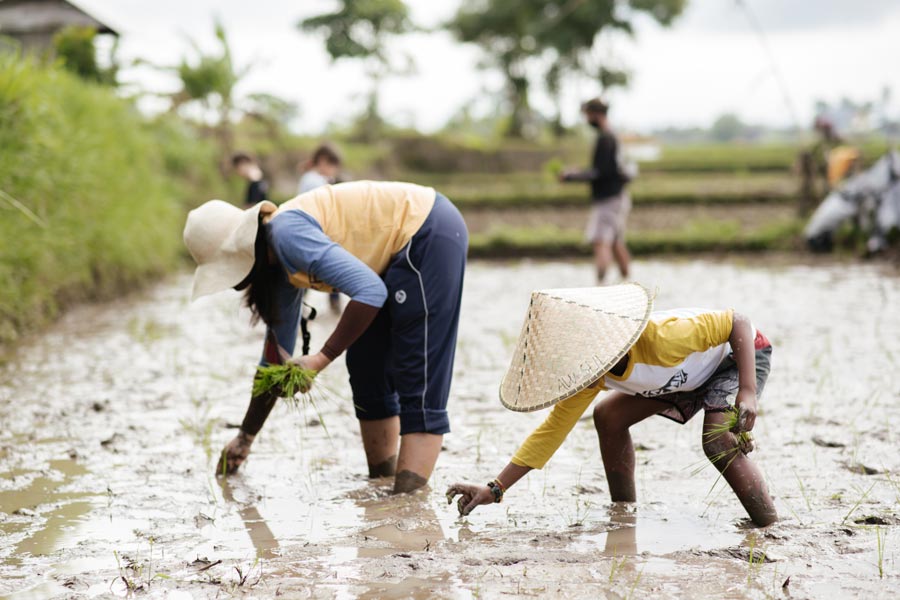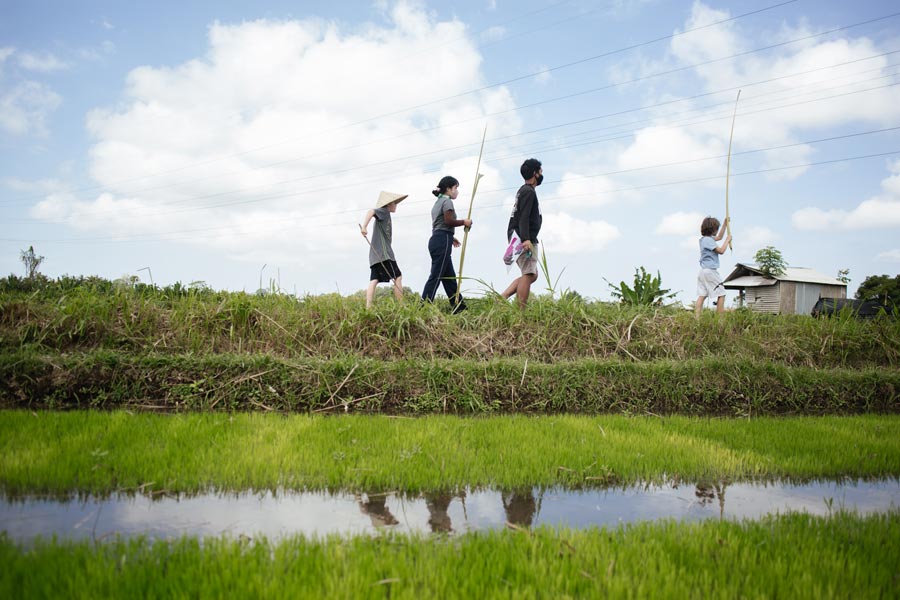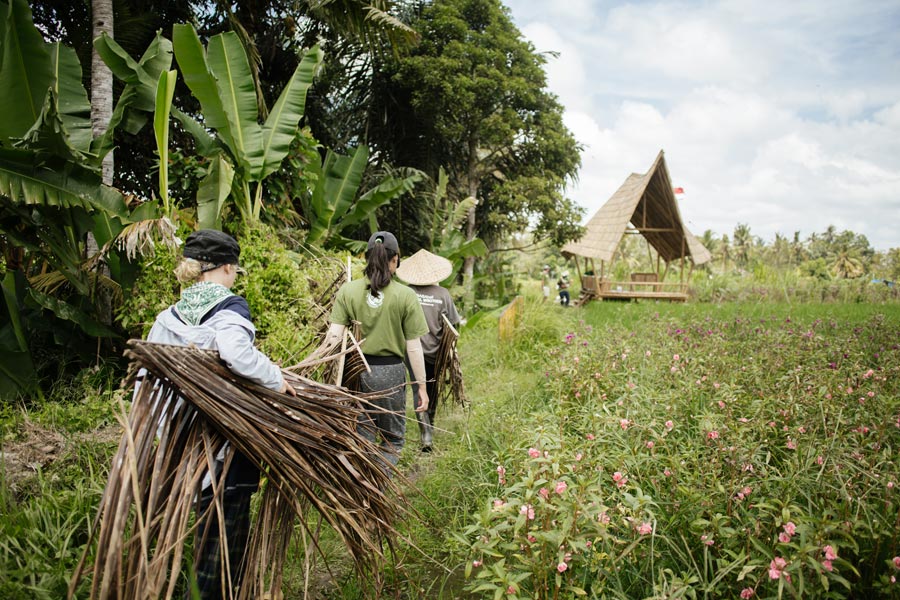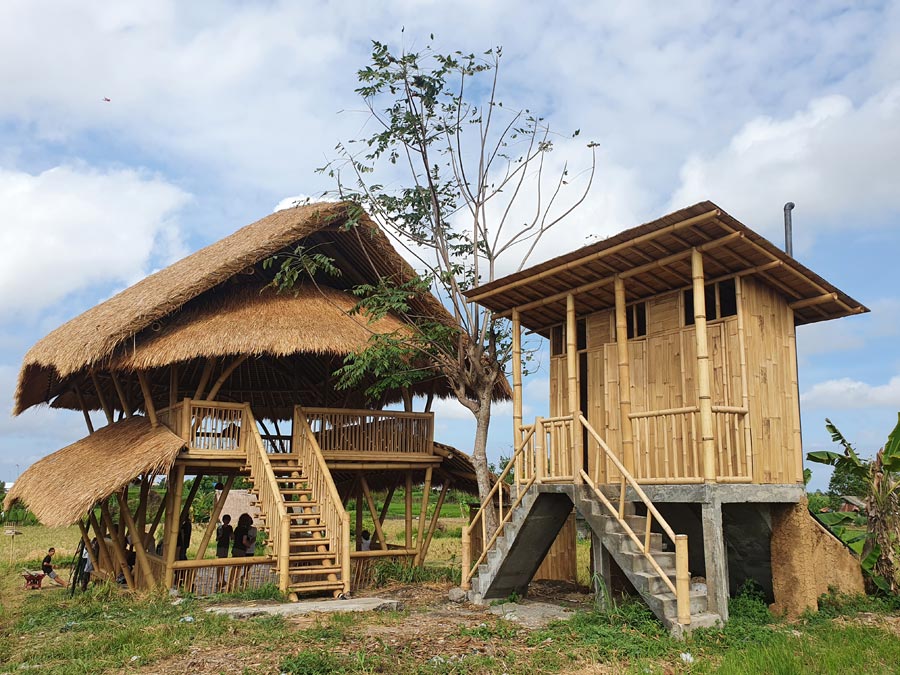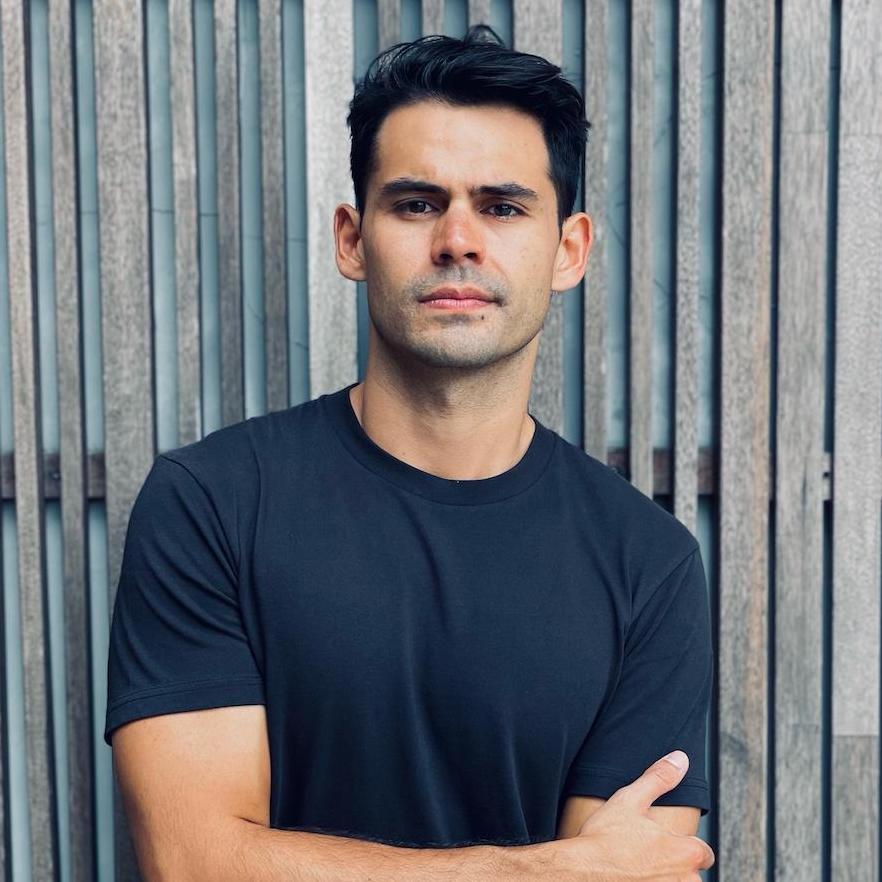Two years ago, Tim Fijal woke up in a fever with the words ‘Astungkara Trail’ bouncing through his mind. This wasn’t some divine vision, but rather the result of a calling unfulfilled; an idea that had been gestating in the deep recesses of his mind, finally forming in his consciousness. Two years later, Tim’s dream of a Bali-based walking pilgrimage has become a reality with the creation of the Astungkara Trail.
This epic trail takes ‘pilgrims’ right through the centre of Bali, from the south to the north coast. A trek spanning 10-days of discovery and introspection, learning and connection, challenge and perseverance. But before getting into the details of the trail, it’s important to understand the vision of the organisation behind it…
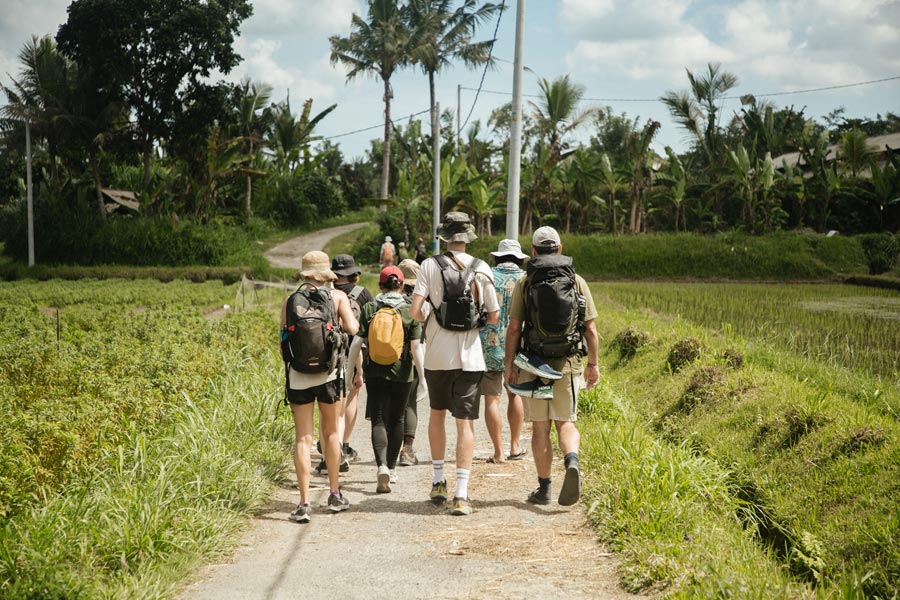
The Astungkara Way
Astungkara Way, founded by Tim Fijal, is a social enterprise dedicated to creating regenerative agriculture across Bali, enticing Balinese youth back to the farms and reconnecting people with nature.
Tim’s work with local farmers began when he was directing a community programme at the Green School Bali, known as the Kul Kul Connection. Through this work, he noticed a dire need for regenerative farming methods, seeing the degeneration of farmlands caused by chemicals, pesticides and other environmentally harmful practices, many of which came about during the Green Revolution.
So, in 2020, with the support of young Balinese agriculturalists and facilitators, Tim founded Astungkara Way. The organisation works closely with local farmers, teaching them age-old farming methods (think permaculture, composting, etc.) that actually improve the health of the soil and the ecosystem — which, in turn, also improves the livelihoods of the farmers.
However, that’s only one side of their work. Another mission is really to facilitate a deep reconnection with nature and bring people closer to their source of food, as well as to the communities that grow this food.
This is done through the organisation’s activities, which invites local and international guests to experience life in the Balinese countryside. This involves farm tours, immersive lessons, participation in farming activities and more. The final puzzle piece, and their piece de resistance, is the Astungkara Trail.
The Astungkara Trail
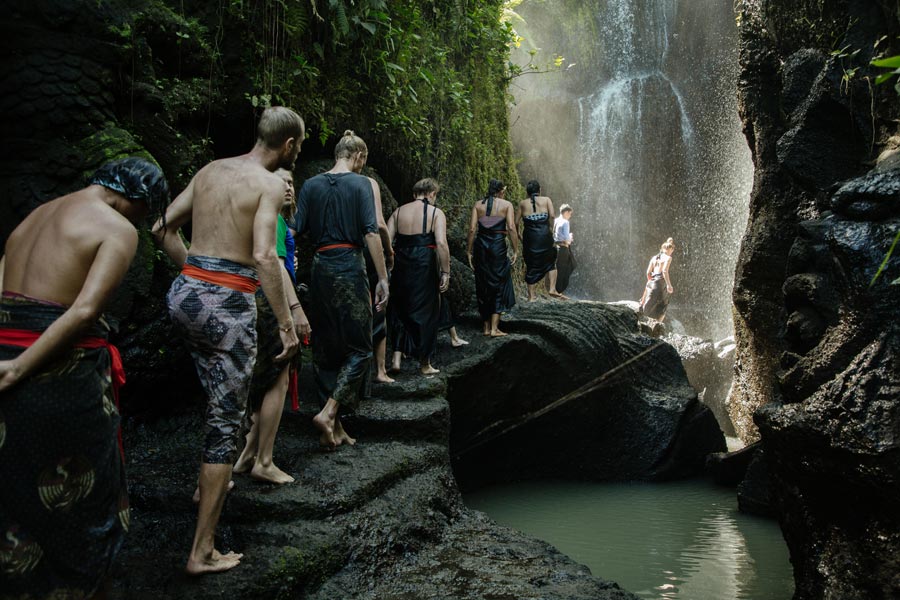
There is a famous pilgrimage in Europe known as the Camino de Santiago. It started as an important Christian pilgrimage during the Middle Ages, where the Cathedral of Santiago de Compostela, in northwestern Spain, was the final destination. It is here the apostle Saint James the Great is said to be buried and thus the journey is also known as The Way of St. James.
Whilst many pilgrim’s ways were established over history, the most famous is The Camino Francés or the French Way. This route starts from Saint-Jean-Pied-de-Port, on the French side of the Pyrenees, and is a journey of 800km to the cathedral — a 30-day walk. It is still taken by Christian pilgrims, but it has grown to become a journey taken by anyone, with many sharing profound moments of self-discovery and introspection during the momentous walk.
The Camino de Santiago was Tim’s unfulfilled calling; a transformative trip that he and his wife have long-hoped to experience. Clearly, it had been activating neurones at the back of his mind, because in the midst of a deep sleep he woke up to find that his calling and his current life had found a way to connect: the Astungkara Trail.
“If I couldn’t walk the Camino,” shared Tim, “then I thought why not make one here in Bali?”
So the Astungkara Way team set out to create a monumental trail through Bali. Tim wanted to create a pilgrimage that would have the same emotional effect as the Camino de Santiago, knowing that so many days of walking brings the mind and soul to reflection.
After a year of development, the trail is finally ready. It traverses 130km from south to north Bali, cutting through the heart of the island. It requires nine overnights in different locations, passing through the island’s many different terrains, from rice fields to agroforest to mountain valleys. ’Pilgrims’ walk anywhere from two to seven hours each day.
Whilst there is no tomb of a Christian saint waiting at the other end, the destination is hardly the goal. For any pilgrimage – including Camino or the Inca trail – the journey itself is the crux of the experience. Throughout the 10 days, the trail invites you to embrace the surroundings, the people you meet and importantly, the silent moments of reflection as you take each step. “It’s medicine,” comments Tim. For what, you might ask? Modern life.
On the trail, Astungkara Way invites walkers to participate in rice planting, composting and tree-planting; bringing awareness to the organisation’s core values of regenerative agriculture and bringing people closer to their source of food. Meals are made with the satisfaction of encompassing fruit, vegetable or crop foraged by one’s own hands on the day.
In the evening, guests take shelter in open-air bamboo bales – with comfy mattresses, sheets and mosquito nets – to continue the connection with the outdoors. Though some nights are spent in tents and local guesthouses.
A part of the mission for the trail is to make people slow down, to return to a natural pace of life — something that our urban lifestyles has certainly stripped from us. This is further emphasised by meeting with the local farmers whose lives are governed by nature, exemplifying slow living. “We can learn a lot from these rural livelihoods, there is a lot of endemic wisdom that has been forgotten, and that’s why meeting with these communities is such an important part of the Astungkara Trail,” Tim explains. It is a promising model for Bali’s future. The epitome of slow tourism and a welcome alternative to the mass tourist model adopted pre-pandemic.
To find out more about Astungkara Way and the Astungkara Trail, visit astungkaraway.com.

